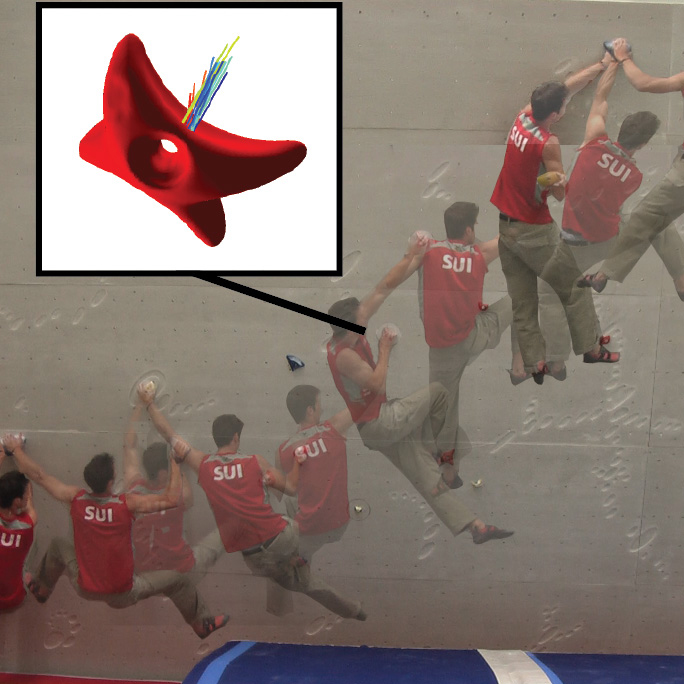Performance Analysis in Climbing
Climbing is a fast growing competitive and recreational sport, attracting athletes of different age groups and with different aims who train regularly in an increasing number of indoor climbing gyms. Despite the popularity of climbing, research on biomechanical aspects of climbing such as the contact forces is still in its infancy. In addition, recent developments in markerless tracking hold the potential to capture characteristics of successful climbing, even during competitions. This opens up completely new possibilities for performance analysis, not only for coaches but also for media coverage of the sport.
Involved People

Although contact forces between climber and hold have been emphasized as an important component in successful climbing, affordable instrumentation to measure these forces are not available, especially for measuring holds with arbitrary shapes. In addition, forces are only rudimentarily recorded in climbing-specific tests, for instance, by instrumented hang boards. Therefore, we are developing cost-efficient instrumentations monitoring meaningful differences in climbing performance metrics. Our current focus is on contact forces in speed climbing and during campus board training.
Research on performance-related factors in climbing is currently limited by the absence of standardized testing protocols. One such example is the assessment of finger strength, which has been well established as a key factor in climbing performance. However, developing consistent and reliable testing protocols remains a significant challenge. We are therefore investigating factors that could influence the reliability and validity of maximum strength tests of finger flexors. Analogue to other standards of the International Rock Climbing Research Association, the aim is to develop a protocol that facilitates the comparison of data collections.
Several studies have utilized camera-based motion analysis, for example, to identify specific phases of climbing or to implement hold detection and pose estimation. Pose estimation models have also been applied in speed climbing, focusing on tracking the centre of mass and on analyzing joint angles. Marker-based approaches remain relevant, as recent studies conducted in collaboration with ETH Zurich investigated the kinematics of individual finger segments in various grip positions, specifically analyzing finger and wrist joint angles. These studies highlight the growing use of pose estimation and marker-based approaches in climbing research to gain further insights into the biomechanics of climbing. We now aim to apply these methods to address the subjectivity of judging, a field that has not yet been sufficiently examined in climbing and is underexplored in sports in general.